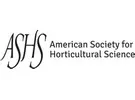In an effort to address the challenges posed by rising global temperatures, researchers from the University of Florida's Everglades Research & Education Center in Belle Glade and the Horticultural Sciences Department in Gainesville have identified subtropical lettuce varieties with enhanced heat tolerance using innovative Accelerated Shelf Life Testing (ASLT) methods. This study evaluated lettuce (Lactuca sativa L.) varieties for heat tolerance.
This study evaluated lettuce (Lactuca sativa L.) varieties for heat tolerance and shelf life grown under humid, subtropical conditions, focusing on spring production in southern Florida, where rising temperatures can cause premature bolting and reduced shelf life. The objectives were to identify genetic variability among lettuce types and accessions and to analyze the genotype × environment (G × E) interaction to estimate quality and shelf life. Five lettuce types (romaine, crisphead, butterhead, leaf, and Latin) were grown in commercial conditions across five field experiments over two seasons in the Everglades Agricultural Area. Lettuce heads were assessed at harvest and cooled prior to storage using protocols they developed for ASLT.
Using an Accelerated Shelf Life Testing (ASLT) protocol, researchers compressed the evaluation period from 30 days under commercial storage conditions to about 10 days. allowing subjected various subtropical lettuce accessions grown under these extreme subtropical conditions to be more quickly assessed for to simulated heat stress to determine their durability quality and shelf-life performance under extreme conditions. This testing approach enabled rapid identification of the most robust varieties, offering growers valuable insights into which cultivars can better withstand higher temperatures without compromising quality.
Heat tolerance, along with good postharvest quality characteristics including shelf life, is needed when improving lettuce cultivars for longer sustainability of winter/spring production for the subtropics in the United States. Breeding lines with less bolting, or pinking disorder, no tipburn, acceptable marketability, and head weight comparable to commercial cultivars were identified in this research.
Developing mapping and breeding populations that combine both favorable horticultural characteristics and longer shelf life under warmer growing conditions should be a priority for lettuce genetics studies and breeding purposes, especially due to climate change.
Dr. Germán Sandoya is an associate professor of breeding and genetics who is responsible for developing new cultivars of this leafy vegetable in the subtropics. Dr. Sandoya's program aims to make lettuce cultivars resistant to diseases affecting the crop, tolerant to weather-related stresses such as warmer temperatures, and have longer durability at retailers by increasing the shelf-life of lettuce.
The study was conducted as part of Dr. Catherine E. Monserrate's dissertation during her PhD studies. Dr. Monserrate was under the mentoring of Drs. Steven Sargent, a Postharvest Specialist and Germán Sandoya, Lettuce Breeder and Geneticist while at the University of Florida. The data analysis was conducted by Dr.Gustavo Kreutz who specializes in statistics. The storage work was conducted in a leafy vegetable processing facility in Belle Glade, FL and had the support of the Florida leafy vegetable growers as longer shelf-life is a top priority for lettuce producers.
The full study can be read here.

 American Society for Horticultural Science (ASHS)
American Society for Horticultural Science (ASHS)